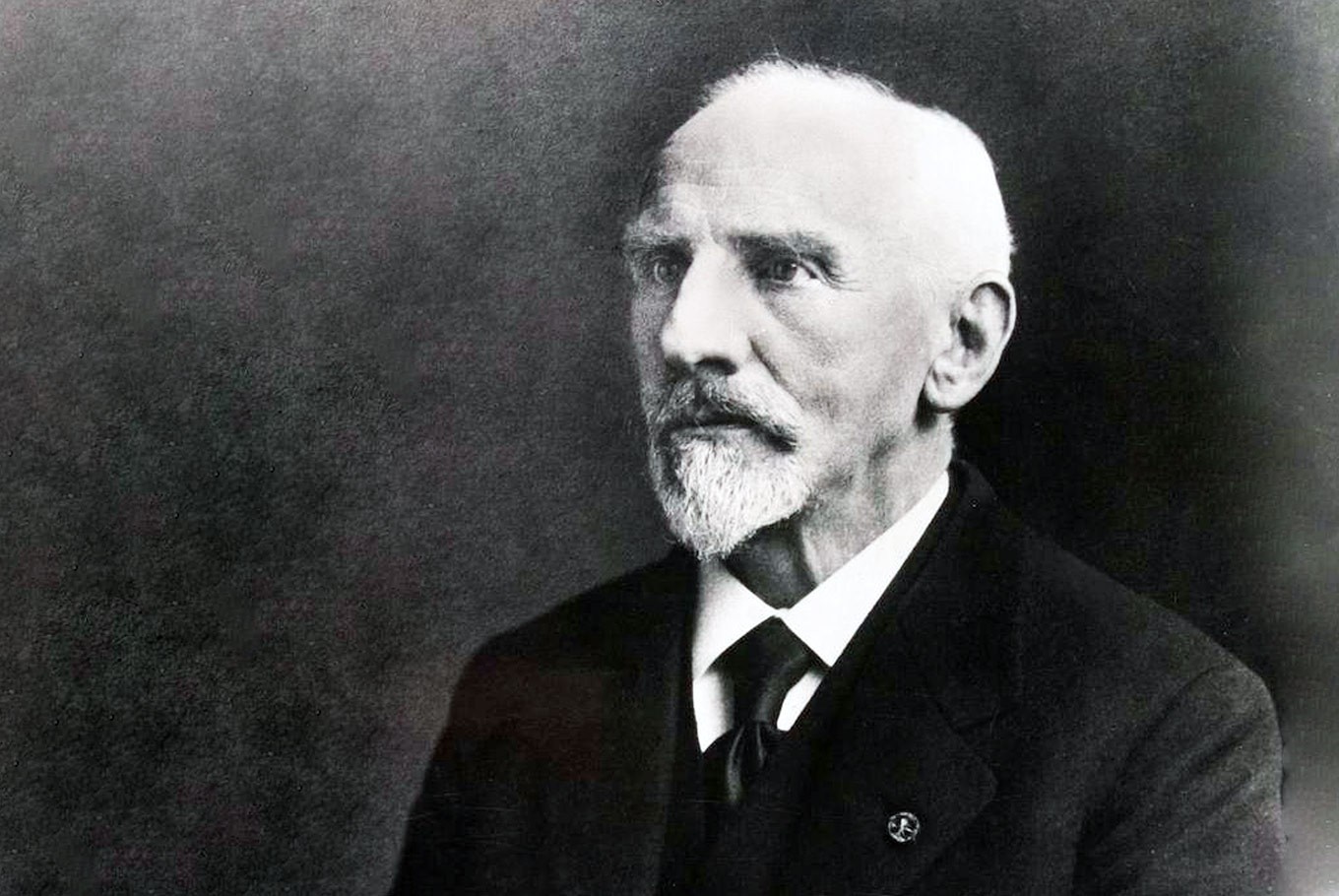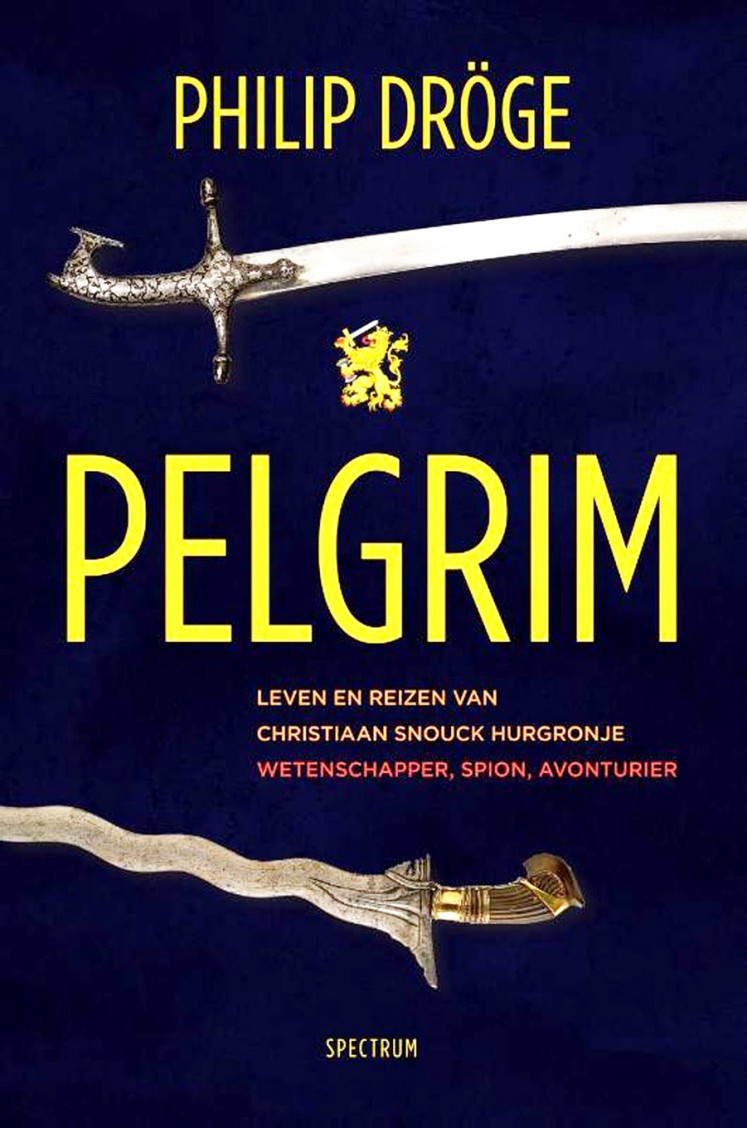Popular Reads
Top Results
Can't find what you're looking for?
View all search resultsPopular Reads
Top Results
Can't find what you're looking for?
View all search resultsChristiaan Snouck Hurgronje: The colonial strategist
Christiaan Snouck Hurgronye (1857-1936) was Holland’s most famous Orientalist and an expert on Islam. His rich writings are preserved in Leiden and much has been written about him and his works.
Change text size
Gift Premium Articles
to Anyone
H
e was a great scholar who mastered 16 languages, learned Oriental cultures and described them meticulously. But he was also a man of great adventure and ambition that made him part of the colonial state’s expansion to which he dedicated most of his works.
Christiaan Snouck Hurgronye (1857-1936) was Holland’s most famous Orientalist and an expert on Islam. His rich writings are preserved in Leiden and much has been written about him and his works.
Now, a senior journalist has written a book about Hurgronye’s life and adventures.
Philip Dröge’s Pelgrim, Leven en reizen van Christiaan Snouck Hurgronje -- Wetenschapper, spion, avonturier (Pilgrim, Life and voyage of Christiaan Snouck Hurgronje — Scholar, spy and adventurer), Spectrum, 2017, is not intended as a full biography. His complex life may defy an official biography, which has not been written yet.
Instead, Dröge offers a narrative of events in the 355-page book, written in Dutch, describing dramatic encounters full of risks and danger as Hurgronye entered and lived in Mecca — the holy city — most exotic for Europeans, yet forbidden to non-Muslims.
Hurgronye knew only too well that he had to go native and to get along with the Ottoman authorities who ruled the Arabian Peninsula.
As Dröge describes it vividly, it was with such resolve that Hurgronye was circumcised only to find his bloodied penis on the floor after a barber cut it off.
And once he read the prescribed verses of conversion before the Qadi (jurist), Christiaan Snouck Hurgronje “was no more” (p.69). The young PhD student from the University of Leiden thus became Abd al-Ghaffar al-Laydini (The servant of the all-forgiving God from Leiden).
Philip Dröge’s Pelgrim, Leven en reizen van Christiaan Snouck Hurgronje -- Wetenschapper, spion, avonturier (Pilgrim, Life and voyage of Christiaan Snouck Hurgronje — Scholar, spy and adventurer), Spectrum, 2017, is not intended as a full biography. (Spectrum/File)His journey from Jeddah to Mecca with a caravan of men and camels, his arrival in the holy city and his life there are written in a style that implores readers to feel and “touch” his adventure — like the story of his bleeding penis.
Going native for Hurgronye meant more than adaptation. He lived truly like the locals in terms of clothing, consumption and almost all aspects of daily life — including adopting an Ethiopean girl as his slave even though slavery was outlawed in Europe.
In Mecca, he studied under the guidance of prominent religious scholars like Sayeed Ahmad Dahlan whose name was adopted by Indonesian Muslims who founded Muhammadiyah. Hurgronye also became a neighbor and good friend of the Acehnese and Javanese communities who resided in Mecca.
From all of them, from his slave to the holy Sayeed, Hurgronye gathered ethnographic details in his search to find what was then seen as “the secret of Islam”.
At a time of upheavals when rebel groups were involved in the name of Islam — also in Dutch East India — Hurgronye’s work was of utmost importance. Indeed his trip to Mecca was sponsored by the goverment in The Hague to acquire a greater understanding of the Islamic world.
Unfortunately, six months later, because of some controversy around a pre-Islamic artefact discovered by a German geographer, in which Hurgronye was somehow involved, he had to leave Mecca for his own safety.
But it was the right time for The Hague to send Hurgronye to Aceh, that part of the Dutch colony that produced profitable black pepper now threatened by a Muslim rebellion led by Tgk. Chik di Tiro whose relatives were well-known to Hurgronye from his time in Mecca.
Thus, on March 27, 1889, Hurgronye was ready to undertake a journey to the northern tip of Sumatra with a secret plan known only to the Minister of Colonies in The Hague and the governor general in Batavia.
The latter, however, decided to send Hurgronye to Banten where a number of Dutch and local officials were slaughtered by fanatics. It was in Banten and later in Aceh, it would seem, that Hurgronye was confronted with local dynamic of Islam and recognized natives who obeyed the authority and those who were rebellious.
Muslim natives were generally peaceful, but under certain circumstances they could mix social issues with Islamic imperatives. Hence, not Islam, but political Islam — Hurgronye was once quoted — is verwerpelijk (deplorable). A distinction Soeharto also applied in the earlier phase of the New Order.
But Hurgronye, being a key advisor, had by then been deeply implicated in the actions of the colonial state.
When he started his mission in Aceh later, he proposed to stay away from both the Sultan and the Dutch community and prepared a strategy to crush the Tgk. Umar rebellion.
He joined the Military Governor Jo van Heutsz for a three month-long military operation starting in Pidie on the east coast to Meulaboh in the west. They cut off links between the rebels and the pepper fields so as to catch Umar and end his rebellion.
How proud Hurgronye was of his achievement can be seen as he read the newspaper reports. While the media celebrated Van Heutsz as war hero, Hurgronye interprets the news differently. Most importantly for him was that Umar was killed on the west coast, which meant that his tactic worked. By closing in on Umar and other warlords, they no longer felt secure (p.258).
Yet, Hurgronye concluded his 16 years work in the colony disillusioned. The man who saw himself as onaantastbaar (powerful) now felt gebruikt (merely being used) in Aceh and Banten. Tired of his collusion within Dutch bureaucracy, he rejected an offer to become governor of Aceh. In 1906, he returned to Leiden.
When he became rector magnificus of the University of Leiden in 1921 he condemned Dutch exploitation of the natives and called for an end to racial discrimination. His inaugural speech echos the famous cry Eduard Douwes Dekker aka Multatuli voiced in Max Havelaar ( 1859 ).
Eighty years later, everything Hurgronye witnessed had definitely gone, Dröge claims as he looks at modern Mecca and visits post-tsunami Aceh.
One of the most intriguing questions, however, remain: Was Hurgronye a faithful Muslim or did he manipulate the faith for his own ambition?
He told his friend, Cornelis van Vollenhoven, that he was klaar (finished) with Christianity, but remained completely silent on “his” Islam.
One scholar, PS van Koningsveld, however, believes Hurgronye’s conversion was temporary because he used Islam as a “convenient instrument” — although from Dröge’s description one might be impressed by the way Hurgronye enacted his ritual at the holy stone of Ka’abah. The truth, as they say, “only God knows”.












